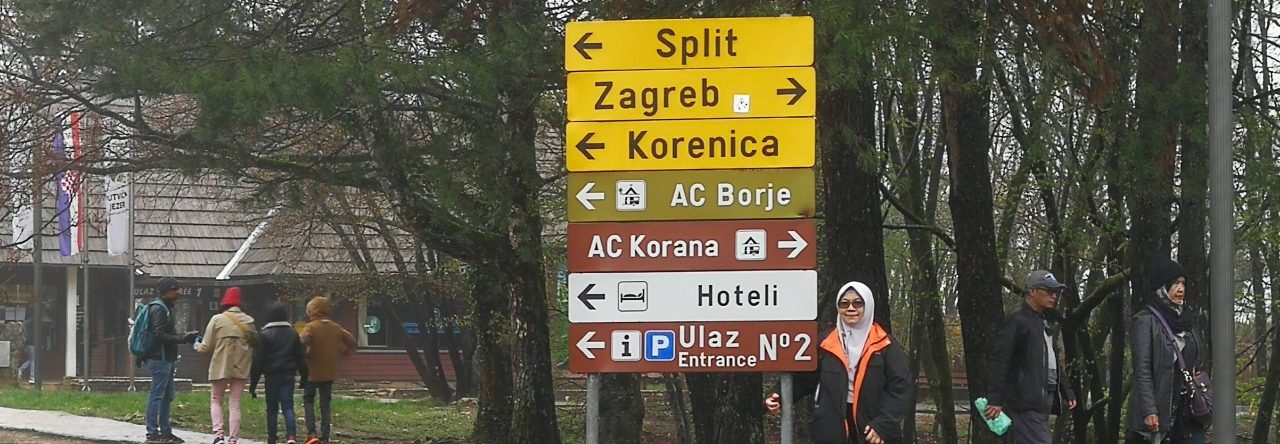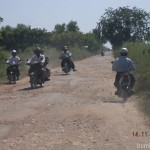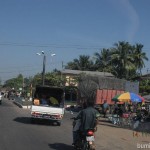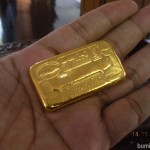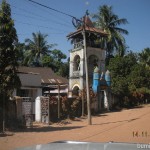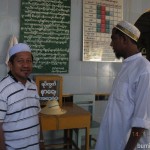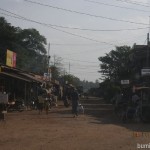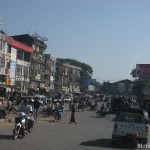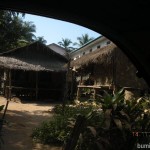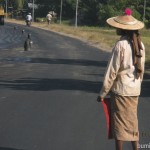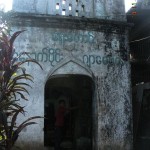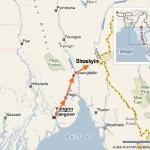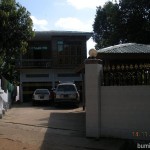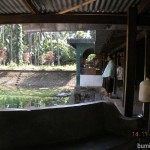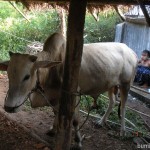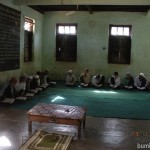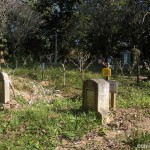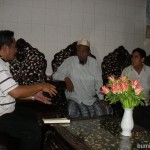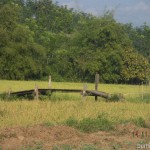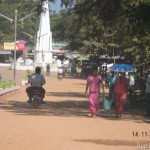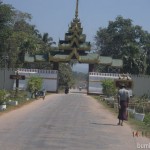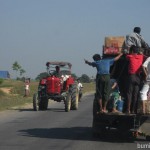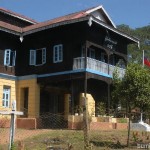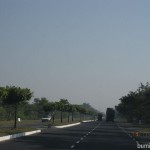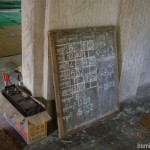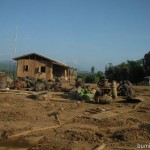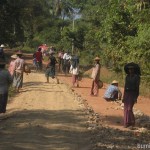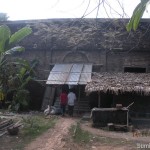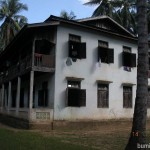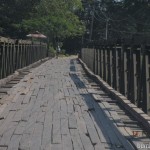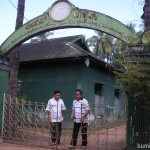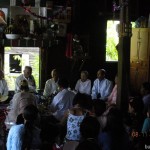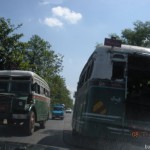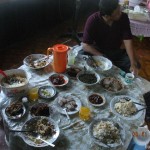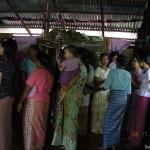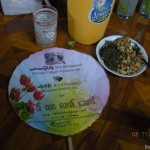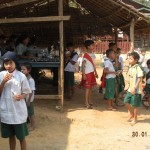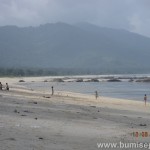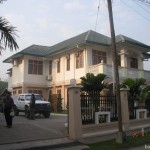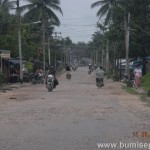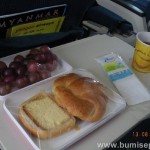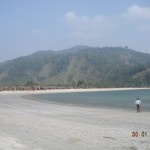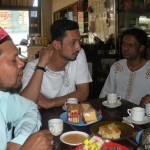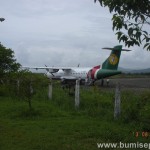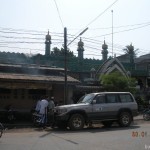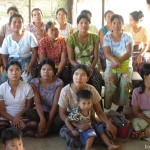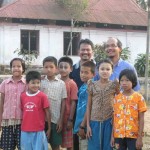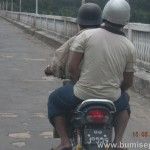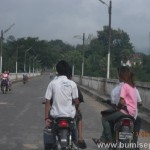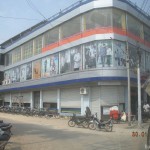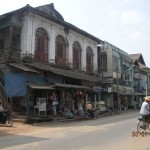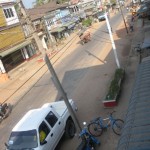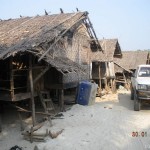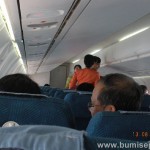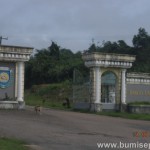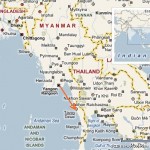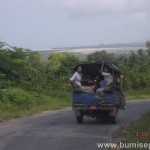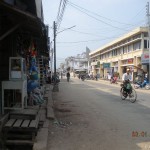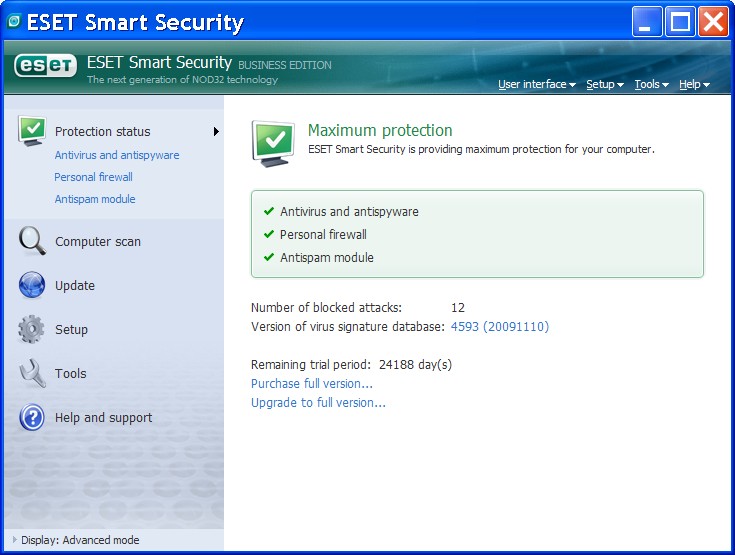Inlay Lake (dieja juga sebagai Inle Lake) terletak di utara Myanmar di negeri Shan, negeri terbesar di Myanmar. Tasik dengan keindahan semulajadi ini berada pada ketinggian hampir 1000 meter dari paras laut. Di atas tenang dan jernih air tasik ini, kaum Intha membina perkampungan mereka di Inlay Lake. Anda tidak memerlukan permit khas melawat tempat ini kerana koridor Yangon – Bagan – Mandalay – Pyin Oo Lwin – Taungyi adalah laluan pelancong yang aula dan lebih penting dibenarkan di Myanmar. Inle Lake terletak dekat dengan Taungyi, ibu kota negeri Shan (bahagian selatan). Wannor berkesempatan melawat Tasik ini dengan menaiki bas dari Yangon pada awal March 2009. Komen beliau pengalaman ke sana memang menakjubkan, tidak hairanlah jika ia digelar Venice of the East. Ikuti ceritanya di bawah.
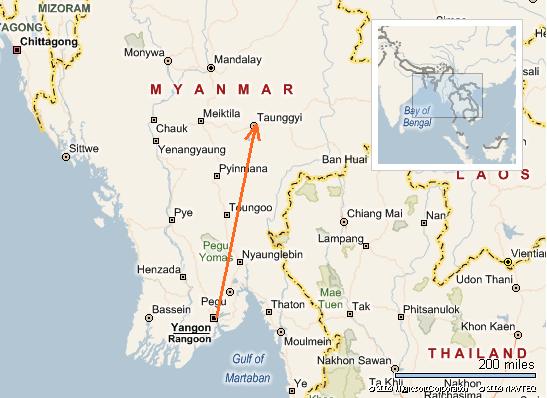
Peta laluan Yangon-Taungyi (Inle Lake)
Perjalanan sepanjang malam dengan bas ekspres dari Yangon mengambil masa hampir 20 jam. Dari Yangon kami menuju ke utara dan seterusnya membelok ke timur di bandar Thazi. Dari sini bermulalah pendakian merentasi pergunungan Shan melalui bandar-bandar (atau kampung-kampung?) seperti Kalaw, Aung Ban, Heho dan Taungyi. Koridor Thazi-Taungyi merupakan laluan utama pelancong ke tanah tinggi Shan dan juga laluan pengangkutan perdagangan dari negeri Shan ke Yangon. Lori-lori besar membawa produk negeri Shan adalah pemandangan biasa di laluan ini. Barangan Thailand memasuki Myanmar juga melalui laluan ini, kerana jika anda meneruskan perjalanan ke arah timur selepas Taungyi anda akan sampai ke Tachilek dan Maesai, bandar sempadan Myanmar/Thailand. Jalan pergunungan ke timur Taungyi ialah kawasan larangan (‘no-go’ area) kepada pelancong asing. Pemberontak kaum Shan menguasai kawasan ini.
Perjalanan dari Thazi ke Taungyi memang meletihkan kerana keadaan jalan tanah merah yang sempit dan berdebu menerusi banjaran gunung. Di satu tempat, bas kami terpaksa ikut jalan bawah menyusuri alur sungai yang kering kerana jambatan di jalan utama runtuh. Jalan berdebu dan berbatu adalah lumrah di Myanmar kerana kawasan tengah Negara ini terletak di iklim zon kering. Jadi anda tahu sekarang kenapa perjalanan Yangon-Taungyi mengambil masa hampir 24 jam, walaupun jarak perjalanan hanya 450 batu. Dari Taungyi ke jeti Inle Lake memakan masa kurang dari satu jam. Insyaallah cerita pasal Taungyi dalam posting lain. Lawatan ke Inle Lake boleh disempurnakan dalam masa satu hari, bagi mereka yang sibuk.
-
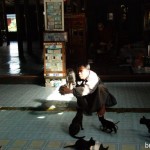
-
Di dalam monastery ‘kucing melompat’ (Jumping cat monastery)
-
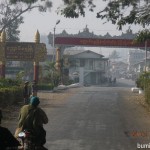
-
Gerbang masuk ke kawasan jeti menuju Inle Lake
-
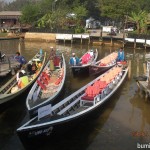
-
Bot menunggu penumpang di jeti Inle Lake
-
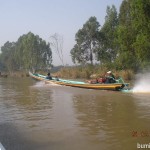
-
Bot meluncur laju membawa barang dan penumpang di Inle Lake, Myanmar
-
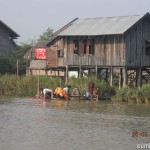
-
Inle Lake menjadi sumber air utama bagi penduduk Intha
-
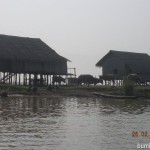
-
Lembu kerbau minum air d Inle Lake, Myanmar
-
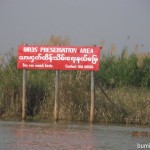
-
Papan tanda di Inle Lake, Myanmar
-
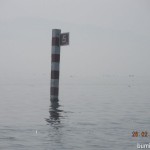
-
Anda sudah 5 batu meninggalkan jeti di belakang (Inle Lake, Myanmar)
-
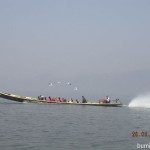
-
Bot laju diiringi burung putih di Inle Lake, Myanmar
-
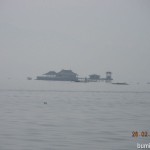
-
Sebuah resort di kejauhan di Inle Lake, Myanmar
-
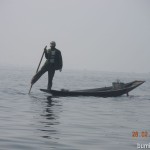
-
Nelayan berkayuh dengan satu kaki di Inle Lake, Myanmar
-
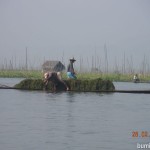
-
Rumpai di dasar tasik menjadi tapak kebun sayur di Inle Lake, Myanmar
-
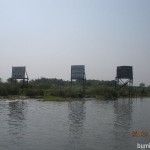
-
Satu persimpangan utama dengan papan tanda di Inle Lake. Myanmar
-
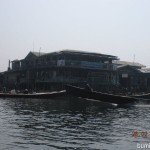
-
Sebuah hotel dan restoran di Inle Lake, Myanmar
-
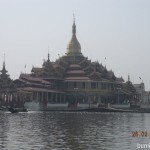
-
Monasteri Phaung Daw Oo di Inle Lake, Myanmar
-
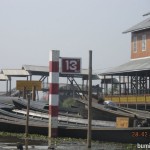
-
Tempat ini 13 batu dari jeti utama Nyaung Shwe, Inle Lake, Myanmar
-
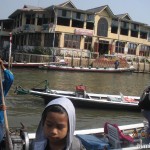
-
Adakah ini Venice di Itali? Bukan bukan — inilah Inle Lake di Myanmar.
-
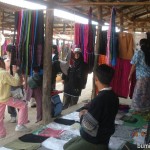
-
Pasar 5 hari (5-day market) di Inle Lake, Myanmar
-
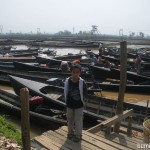
-
Stesen bot di sebuah jeti utama di Inle Lake, Myanmar
-
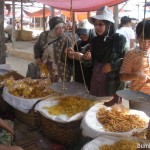
-
Membeli belah barangan keluaran penduduk pribumi di Inle Lake, Myanmar
-
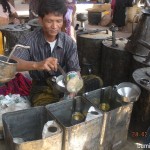
-
Minyak masak cap buruh tidak dijual di sini (Inle Lake, Myanmar).
-
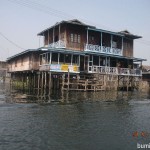
-
Salah satu restoran dan rumah tumpangan di Inle Lake, Myanmar
-
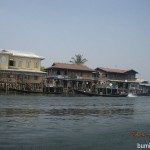
-
Satu perkampungan di Inle Lake, Myanmar
-
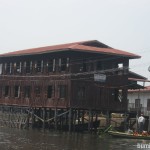
-
Sebuah kilang sutera di Inle Lake, Myanmar
-
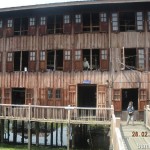
-
Kilang sutera 3-tingkat di Inle Lake Myanmar
-
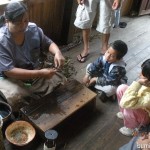
-
Pekerja di kilang sutera mengekstraksi getah pokok lotus
-
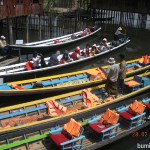
-
Bot membawa pelancong di Inle Lake, Myanmar
-
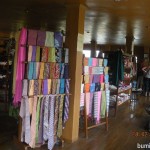
-
Hasil sutera buatan tangan sedia untuk dijual di Inle Lake, Myanmar
-
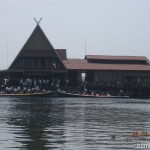
-
Golden Island Cottage di Inle Lake, Myanmar
-
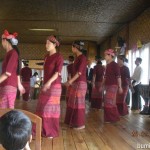
-
Tarian tradisional puak Pa-O di Inle Lake, Myanmar
-
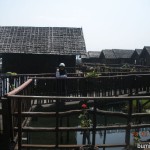
-
Resort terapung di Inle Lake, Myanmar
-
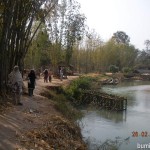
-
Perkampungan dekat Inthein di Inle Lake, Myanmar
-
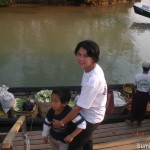
-
Jeti di Inthein, Inle Lake, Myanmar
-
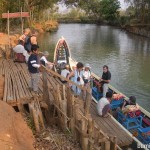
-
Pelancong dari barat di Inle Lake, Myanmar. Siapa kata Myanmar tak selamat untuk dilawati?
-
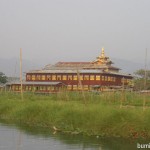
-
Sebuah monasteri di Inle Lake, Myanmar
-
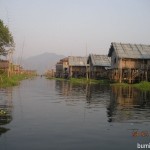
-
Sebatang ‘jalanraya’ utama di Inle Lake, Myanmar
-
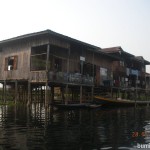
-
Rumah atas air di Inle lake, Myanmar
-
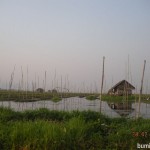
-
Kebun sayur terapung di Inle Lake, Myanmar
-
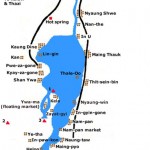
-
Sebahagian tempat yang di sebut dalam posting ini ada di atas peta ini.
-
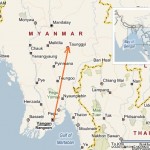
-
Peta laluan Yangon-Taungyi (Inle Lake)
Inlay Lake ialah tarikan utama di Shan State. Kaum Intha bergantung kepada tasik ini untuk hidup hari ke hari. Mereka membina rumah di atas air. Mereka bergerak dengan bot panjang yang diperbuat dari kayu jati. Mereka menanam sayuran di atas rumpai air yang telah mati dan dilonggok menjadi batas-batas sayuran seperti tomato, kobis, kacang panjang dan lain-lain, kecualilah beras yang diimpot dengan bot dari tanah besar. Hampir keseluruhan kawasan tasik diguna sepenuhnya. Pagoda atau rumah ibadah mereka dan monastery (sekolah agama mereka) berselerakan di atas tasik. Kaum ini juga pembuat kraftangan dan penenun sutera yang mahir, semuanya dilakukan secara manual. Kapitalis mengambil kesempatan keindahan tasik ini dengan membina hotel dan rumah tumpangan dan restoran untuk memenuhi hajat pelancong.
Tempat pertama yang kami singgah selepas 45 minit dalam bot dari jeti ialah Pagoda Phang Daw U. Selain pagoda ini, terdapat pasar 5 hari (`five day market’ — pasar setiap lima hari) di belakang kawasan pagoda. Di sini anda akan dapati ramai kaum asli seperti Pa-O, Shan dan Intha yang tinggal di kawasan tasik ini menjual barangan harian dan kraftangan).
Destinasi seterusnya ialah kilang tenun sutera di Inbwa Khone di mana kain sutera dibuat secara manual dengan mengguna peralatan tradisional. Benang-benang sutera diimpot dari China dan ada yang dihasilkan dari pokok lotus yang tumbuh liar di atas tasik. Saya rasa kilang ini akan ditutup tidak lama lagi kerana penenun-penenunnya wanita-wanita lanjut usia. Terdapat banyak bangunan kayu tiga tingkat yang menempatkan bengkel-bengkel penghasilan sutera. Sebuah bangunan kayu menempatkan pusat jualan hasil sutera untuk pelancong.
Golden Island Cottage ialah antara hotel tersohor di Inlay Lake (USD50 semalam – kadar untuk musim luar puncak – `off peak season’). Kami singgah untuk makan tengahari di sini. Persembahan tradisional kaum asli Pa-O dengan pakaian tradisional hitam seumpama pahlawan Melayu Melaka silam mencuri perhatian kami.
Jauh ke pendalaman tasik ini, kami sampai di perkampungan Indein di mana terdapat Pagoda Shwe Inn Tain yang dikatakan berusia lebih 500 tahun. Sepanjang perjalanan ke Indein anda akan melalui terusan-terusan yang mencawang dari Inlay Lake, membelah kampung-kampung kecil. Kehidupan seharian penduduk di sini berkisar di sekitar terusan-terusan ini. Inilah bilik air mereka — mereka mandi manda dan membasuh di sini. Bukan saja mereka malahan kerbau-kerbau air (water buffalo) mereka. Inilah jalanraya mereka. Inilah padang permainan mereka. Inilah sumber rezeki mereka.
Aktiviti utama di tasik ini ialah menangkap ikan dan pertanian. Nelayan solo di atas bot panjang mendayung dengan sebelah kaki (one-legged rower) menjadi karakter utama di tasik ini. Anda boleh berjumpa mereka di waktu pagi dan petang di atas tasik ini. Suruh pemandu bot anda memperlahankan bot dan rakamlah dengan kamera anda. Dengan berlatarbelakang waktu senja di pergunungan Shan, nelayan-nelayan ini menjadi ilham artis-artis tempatan dimanifestasikan di atas kanvas lukisan minyak (oil painting) dan dijual kepada pelancong yang berminat. Kaum Intha juga adalah tukang besi yang mahir dan terdapat sebuah kampung di mana semua isirumah adalah tukang besi. Pasar terapung Ywama ialah tempat di mana mereka membeli belah barang keperluan asas. Tetapi sayang, sewaktu kami tiba waktu operasi pasar tersebut sudah habis.
Jika anda ingin ke Inlay Lake, anda mempunyai dua pilihan untuk tempat penginapan. Anda boleh bermalam di Taungyi dan bertolak ke Inlay Lake keesokkan harinya. Pilihan kedua ialah bermalam di mana-mana hotel atas air di atas tasik itu sendiri, seperti Golden Island Cottage. Pilihan ketiga ialah anda bermalam di hotel atau motel di Nyaungshwe. Nyaungshwe ialah pekan kecil yang menjadi jeti utama ke kawasan tasik. Saya cadangkan anda bermalam di Taungyi. Inlay Lake boleh dilawati dalam masa sehari dan selebihnya anda boleh menerokai Taungyi, ibu negeri Shan. Bandar ini terletak di puncak gunung dan pemandangan memang unik.
Bagaimana untuk ke sana?
Dari Malaysia, MAS terbang hampir setiap hari terus ke Yangon, Myanmar (kecuali Selasa dan Khamis). Tiada penerbangan terus AirAsia ke Yangon dari KUL, kecuali melalui Bangkok, Thailand.
Jika pengalaman berada dalam bas selama 20 jam bukan secawan teh untuk anda, anda boleh mengambil pesawat udara dari Yangon ke Heho. Masa penerbangan hanyalah satu jam sahaja. Yangon Airways terbang setiap hari dari Yangon (terminal domestik) ke Heho. Dari lapangan terbang Heho, anda mengambil masa 45 minit untuk sampai ke Nyaungshwe di pinggir Tasik Inle.
Jika overnight bas sudah menjadi secawan teh kepada anda seperti saya, bas ekspres dari Yangon bertolak setiap petang menuju Taungyi. Dari Taungyi menuju ke Nyaungshwe mengambil masa hanya 30 minit.
Jika kos tidak menjadi hal, pilihan lain untuk sampai ke sini ialah dengan tempahan pakej pelancongan dengan ejen pelancongan yang banyak di sekitar Yangon. Semuanya dari penginapan hingga tiket kapalterbang hingga airport-hotel transfer disediakan termasuk pemandu pelancong yang bijak berkata-kata (dalam Bahasa Inggeris yang retak (broken English))
